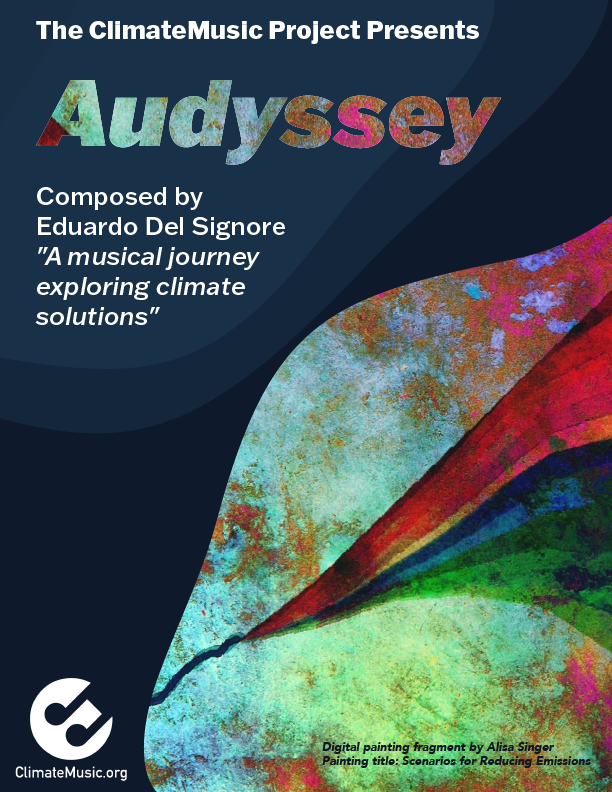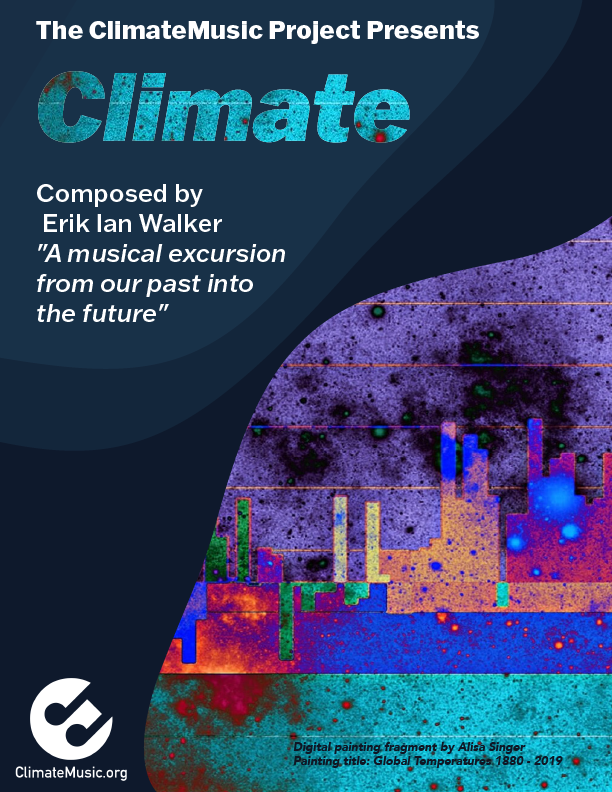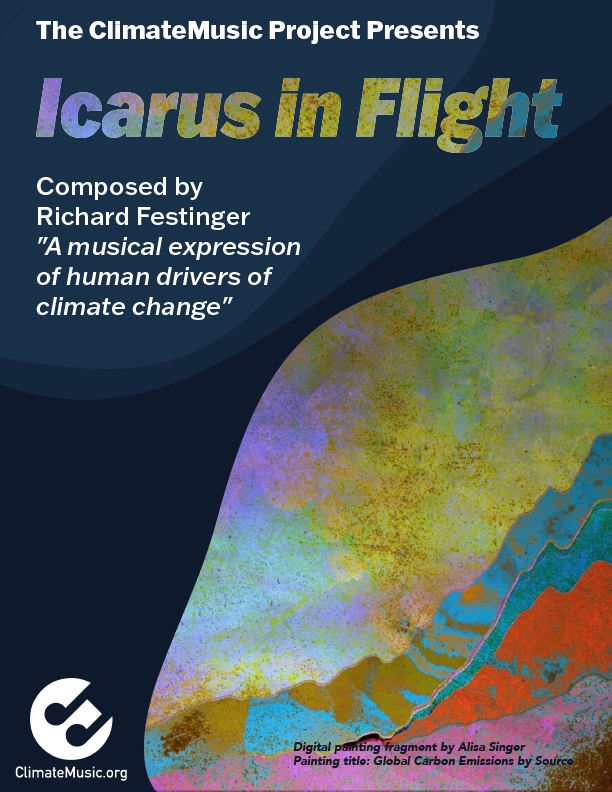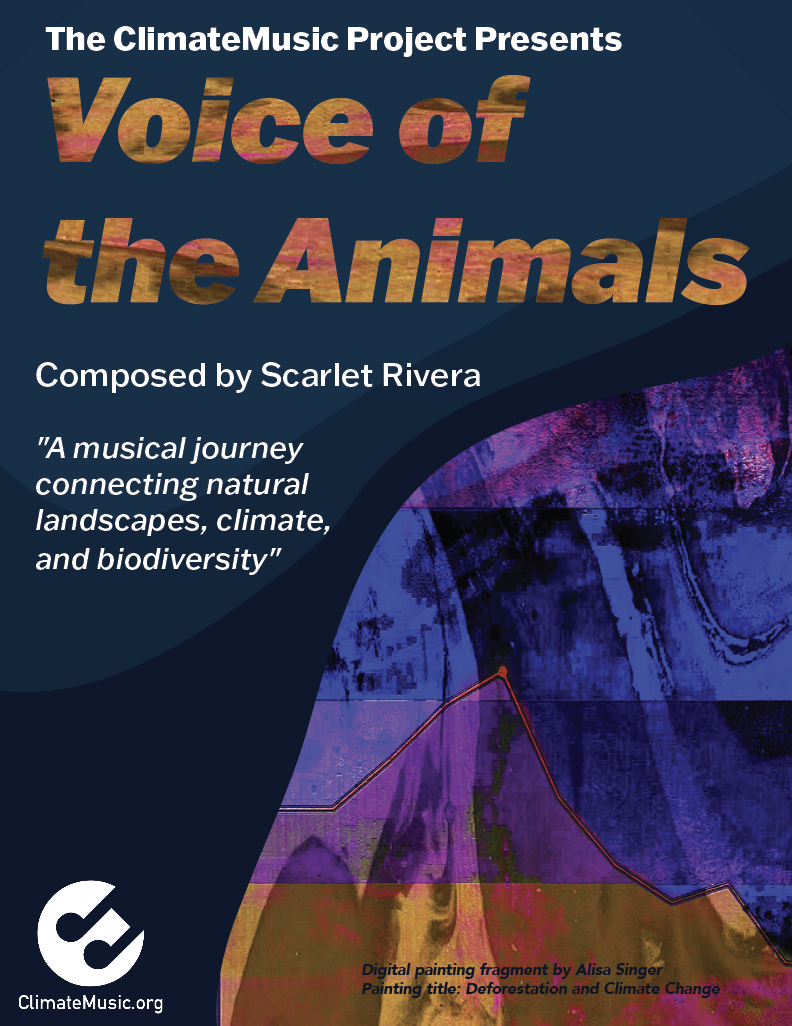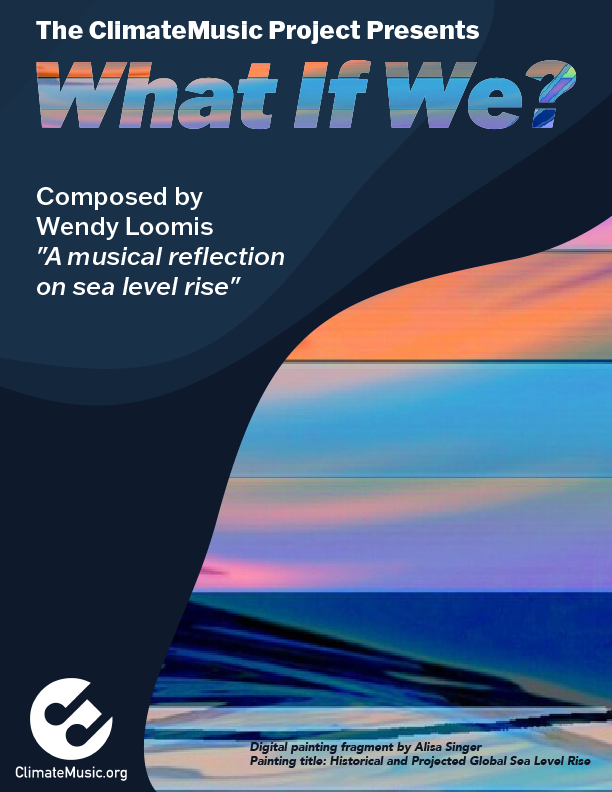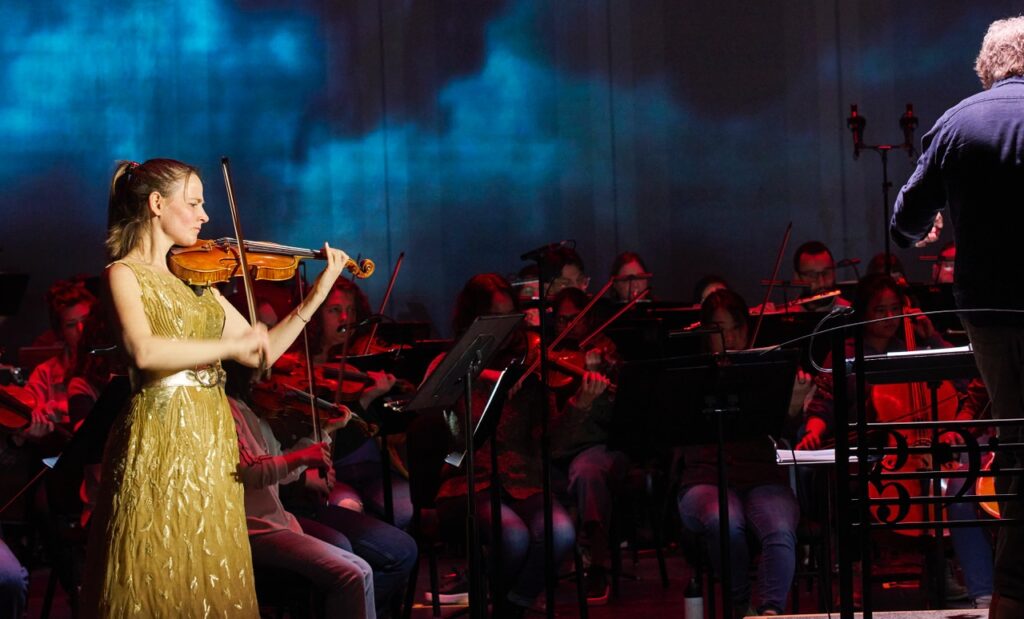Composed by Theodore Wiprud with soloist Elissa Cassini and visuals by Camilla Tassi, Violin Concerto No. 2: on the brink, explores the vicious cycles that have brought us to the brink and the virtuous cycles that could yet pull us back.
You can watch the premiere of performed at The South Dakota Symphony Orchestra, on the SDPB Specials. The performance was recorded live in the Mary W. Sommervold Hall at the Washington Pavilion on January 25, 2025.
The work begins at about 9 minutes in.
Learn more about the premiere from the composer here.
Violin Concerto No. 2, on the brink
My Violin Concerto No. 2 on the brink was commissioned by Elizabeth and Justus Schlichting and composed for Elissa Cassini.
We know that the climate crisis threatens all life on Earth with dislocation and destruction. How can an individual or a community cope with such knowledge? How can we summon the will to constructive action at this late date? My second violin concerto, composed for Elissa Cassini, explores climate grief and despair, but also reason for hope and a call to climate action.
The concerto is rooted in climate science, thanks to the participation of ClimateMusic Project, a nonprofit dedicated to connecting people to climate science and action through the emotional power of music. CMP connected Elissa and me with climate scientists who helped us understand the cascades of phenomena that lead to planetary warming and its consequences, as well as cascades of technological and behavioral change that push back against the current. The image of cascades appealed to my musical imagination, and the related ideas of vicious circles and virtuous circles came to inspire the form of the work.
Learning about climate grief convinced me that human psychology is key to our survival: the resilience to face the unimaginable. In this concerto, the soloist is a protagonist witnessing and participating in the vicious circles of climate change; processing existential fear; and renewing her spirit and partaking in the virtuous circles that may yet stave off the worst. In a sense, the entire drama unfolds in the mind and heart of the protagonist.
I dedicate the concerto, in hope, to humanity’s best qualities, our ingenuity and compassion for each other and for our one planet home.
–Theodore Wiprud, January 2025
The five movements proceed without a break. The Prologue features percussion illustrating the increasing levels of carbon dioxide in our atmosphere, followed by the dazzling appearance of the Sun, source of all energy on earth. The soloist salutes the Sun, which will reappear throughout the work.
In Vicious Circles, the inexorable presence of fossil fuels begins successive, accelerating cycles of reinforcing phenomena: combustion, accumulation of greenhouse gases, rising ocean temperatures, acidification of the oceans, melting ice sheets, rising sea level, and finally, supercharged storms. The music’s tempo gradually increases as the images crowd in. The soloist expresses growing alarm and is finally overwhelmed.
Mourning and Renewal begins with the soloist in a psychic flatline, with a few orchestra strings playing out of tune. She mourns all that is being lost. A turning point comes when woodwinds invoke the beauty of what remains. In the cadenza that follows, the soloist finds renewed motivation to protect what she can, while still plagued by doubts.
Virtuous Circles is an extended rondo form with a cascading figure as a recurring idea, gathering speed with each iteration. In between are episodes inspired by the pace of technological innovation we see today, with musical cells interlocking into increasingly energetic structures. The bane of particulate airborne pollution, suggested by grinding strings and buzzing winds, gradually disappears with reduced combustion.
At the climax, the Sun makes its final appearance, offering unfailing vitality to power renewable energy. In the Epilogue, fossil fuels and greenhouse gasses remain with us, but so too does an upward-swelling vision of hope. We arrive finally at the brink – of doom, or of decisive action. The choice is ours, in how we respond to what is happening around us.
Summary
on the brink explores the vicious cycles that have brought us to the brink of a climate catastrophe and the virtuous cycles that could still pull us back from the edge. It is inspired by a series of in-depth conversations that composer Theodore Wirprud had with a team of our climate scientists beginning May, 2021.
This resources takes a closer look at the science behind the score, first briefly reminding us why warming matters, then examining the concept of vicious and virtuous cycles that are at the heart of on the brink, introducing what scientists call positive and negative climate forcing and feedback loops.
What is warming the atmosphere and why it matters
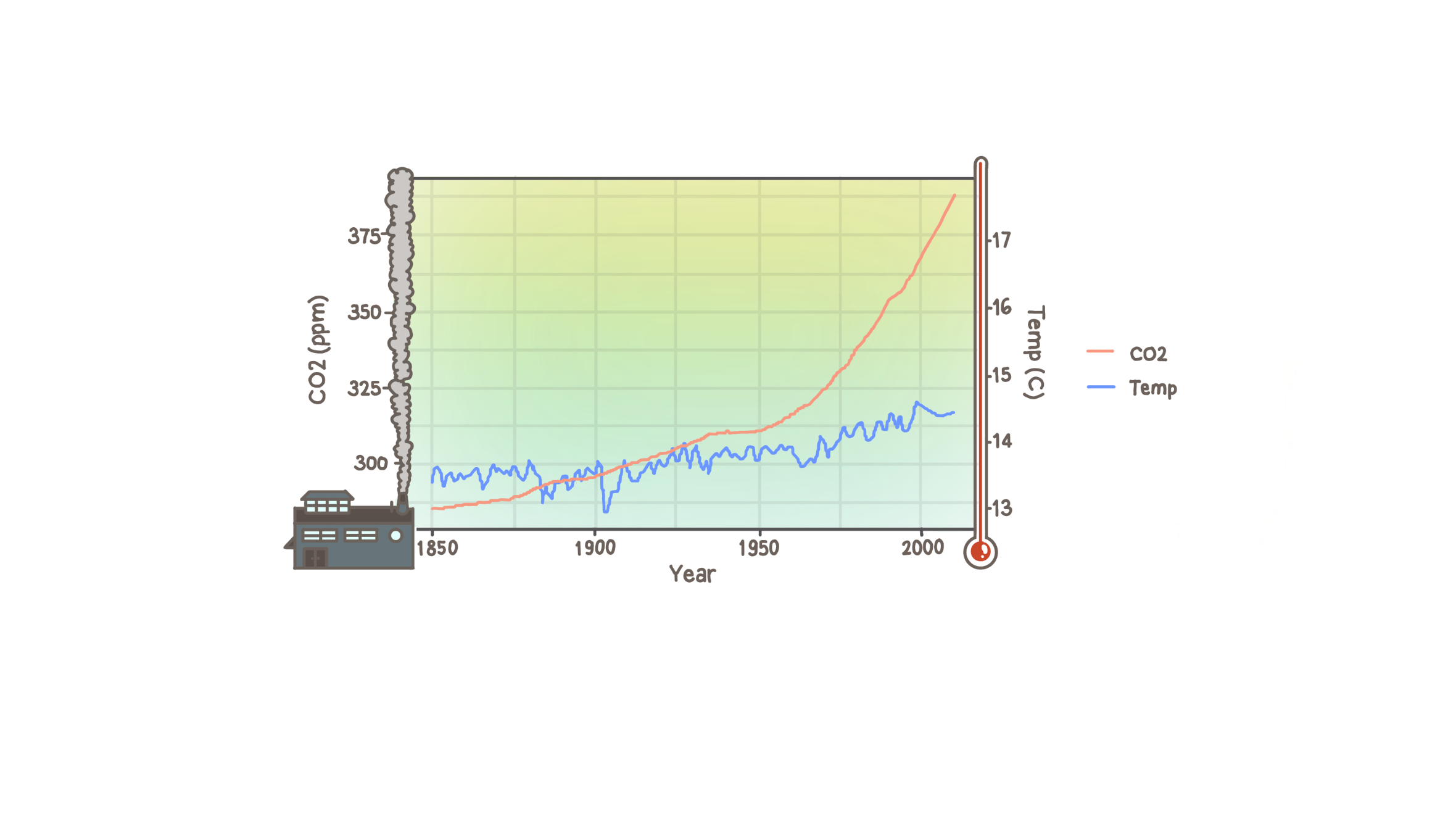
Figure 1: Increase in average global temperatures (blue, right axis) and carbon dioxide (red, left axis) from 1850 to 2010. Global average temperature today is ~1.3 degrees C above what it was in 1850, and CO₂ is ~ 130 ppm higher than in 1850.
The burning of fossil fuels and resulting input of carbon dioxide (CO2) to the atmosphere, combined with other human activities that alter the natural landscape, has raised the average temperature of the Earth over the past century (Fig. 1 above).
Scientists broadly agree that global average temperatures 2° C warmer than those in 1850 would be catastrophic to most human and natural systems – a 2° C warmer world would be one that no human has ever experienced.
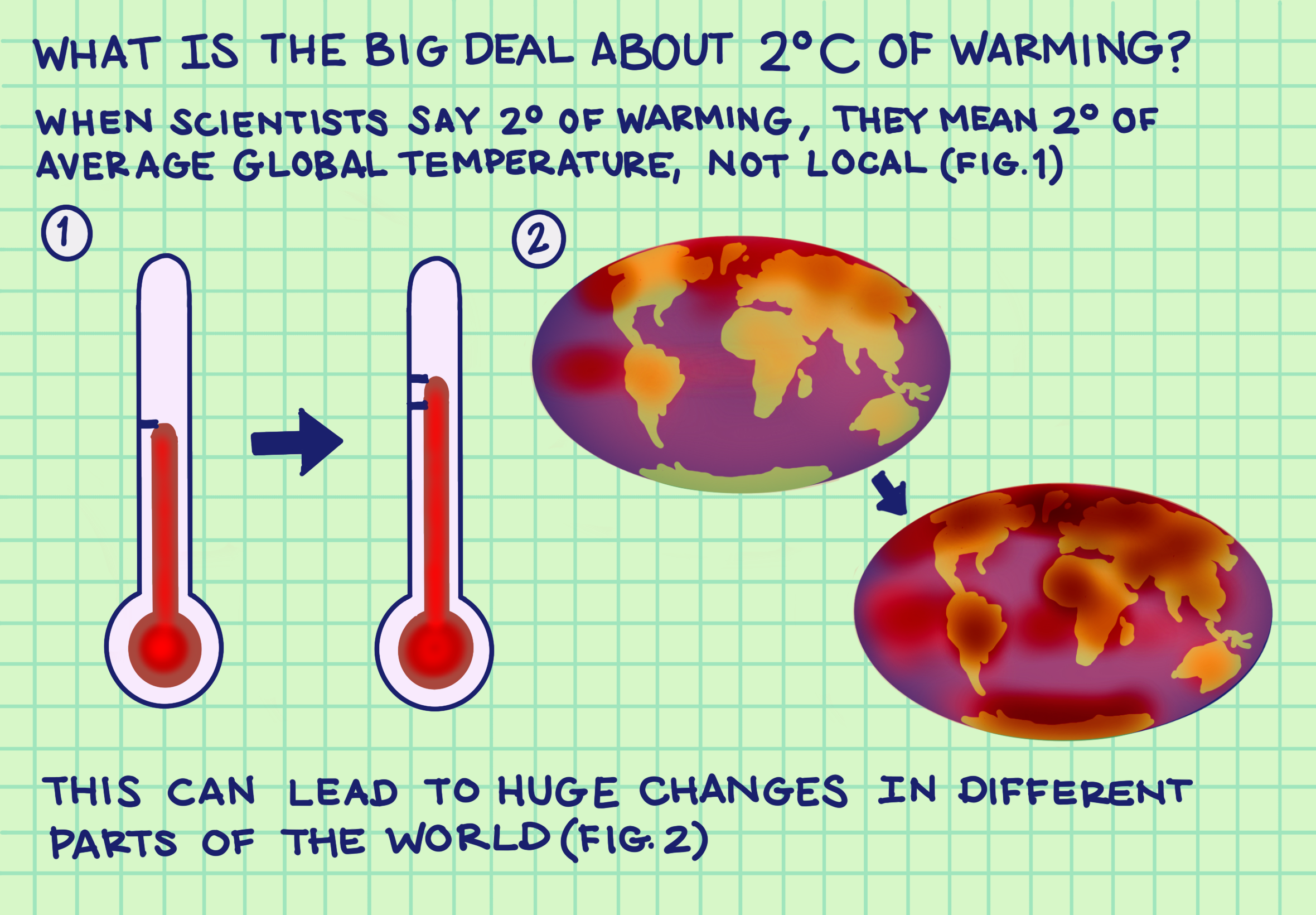
So, the scientific consensus is that humans must take action to keep global average temperatures no higher than 1.5° C above the global average temperature of 1850 (~15° C). To quote from the Intergovernmental Panel on Climate Change, which coordinates global collaboration to address climate change:
Every bit of warming matters, every year matters, every choice matters.
The longer we wait to effectively address the causes of climate change, the more dire the consequences for us all and future generations will be. This is partly because warming and the effects of warming can be accelerated and compounded through the functioning of the Earth system itself once it is thrown off its current equilibrium by human activity.
Vicious cycles in the climate system: Positive Climate Forcing and Positive Feedback Loops
Our planet’s oceans, lands, atmosphere, life (biosphere), and ice cover (cryosphere) are inter-connected. For all of recorded human history, these elements of the Earth’s system have been remarkably stable and balanced, providing ideal conditions for human civilization to grow and thrive. On longer time scales, this has not always been the case – there have been times in Earth’s history when ice covered the majority of the planet, and when warming was so dramatic it cause extinction of the majority of species on the planet. Through climate change today, humans are affecting the very balance that has allowed our species to prosper. Burning fossil fuels and changing natural landscapes to the extent we have is warming the atmosphere, setting the stage for the vicious cycles expressed musically in on the brink. Climate scientists refer to these vicious cycles as “positive feedback loops” – series of actions that reinforce and multiply the initial action.
What does this look like? Here is one example:
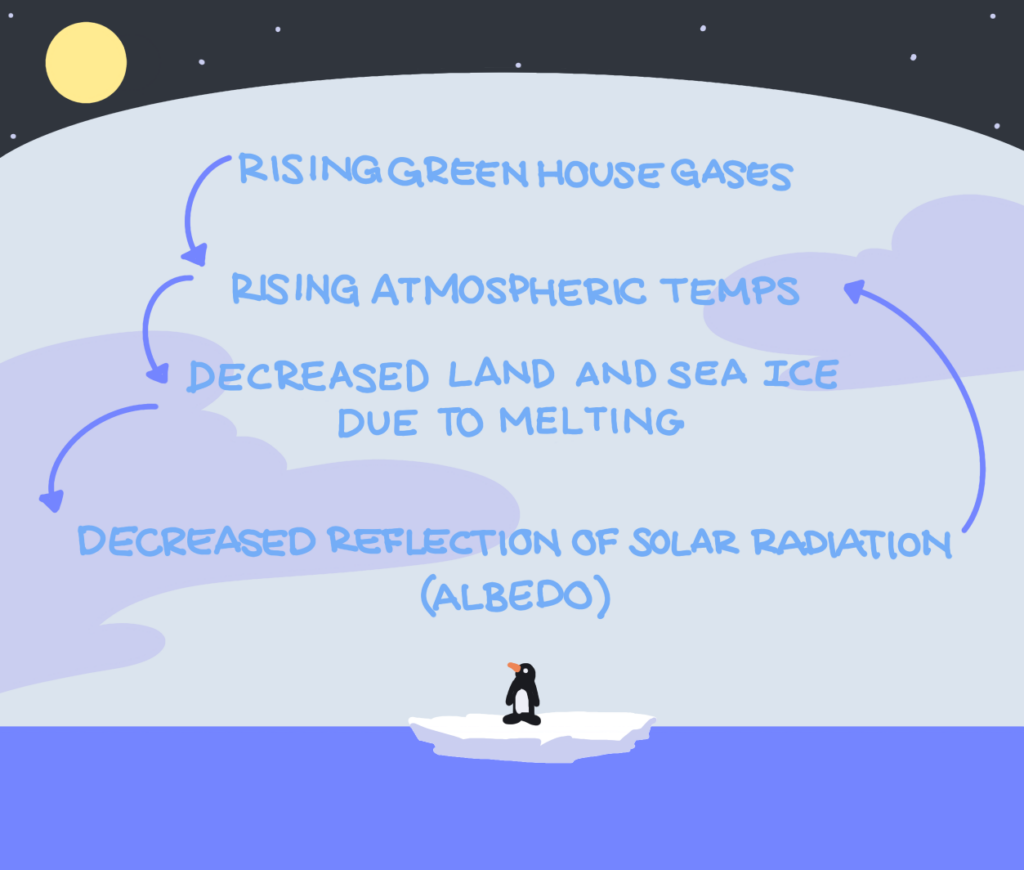
The Earth’s ice cover (i.e., the frozen parts of the Earth, including snow, ice, and frozen ground), known as the cryosphere, affects our climate in multiple ways, including by reflecting solar radiation back into space. White surfaces reflect heat, whereas dark surfaces absorb it.
In the figure above, increases of greenhouse gases in the atmosphere increase warming: When we burn fossil fuels, we trap heat in the atmosphere, raising the temperature. This causes ice cover to melt, exposing the darker land or ocean beneath it. With less reflective surface to reflect solar radiation back into space, the atmosphere traps more heat, leading to further warming and ice loss, which causes further warming and ice loss in a feedback loop.
It’s important to emphasize that, once these positive feedback loops are initiated, human intervention may no longer be able to slow or stop them. This is one of the reason’s why it is critical that we act to stop the activities that contribute to climate change now.
Virtuous Cycles: Negative Feedback Loops
Feedback loops can also be “negative”, meaning that they reduce the impact of the initial action. Humans can play a role in driving these virtuous cycles in the context of climate change by taking action.
Cutting fossil fuel emissions leads to lower greenhouse gas emissions and fewer airborne particulates. This dual effect then cascades through the Earth system, yielding both climate and human health benefits.
Notice here the “co-benefits” of moving away from fossil fuel combustion: The benefits of doing so cascade from the macro level of our climate down to the micro level of our own health. We have to remember that we are part of the Earth System, so what happens at the system level affects all of its parts, including us.
So acting today to fight climate change will not only protect our stable climate to allow future generations to thrive as we have, but it can also help to protect our own health today.
If you want to learn more about feedback loops and how they affect climate change, click here.
Action Ideas and Resources
Click on links for information
- Read about “multi-solving”
- If you are a US Citizen, find your city here for upcoming local elections
- Listen to The ClimateMusic Project’s podcast episode highlighting equitable solar
- Learn about the climate and health benefits of walkable cities
- Learn how to begin a local community garden and get involved
- If you live in the US, check learn about financial incentives to make your home energy efficient
- Learn more about what you can do with on the ClimateMusic action page.
